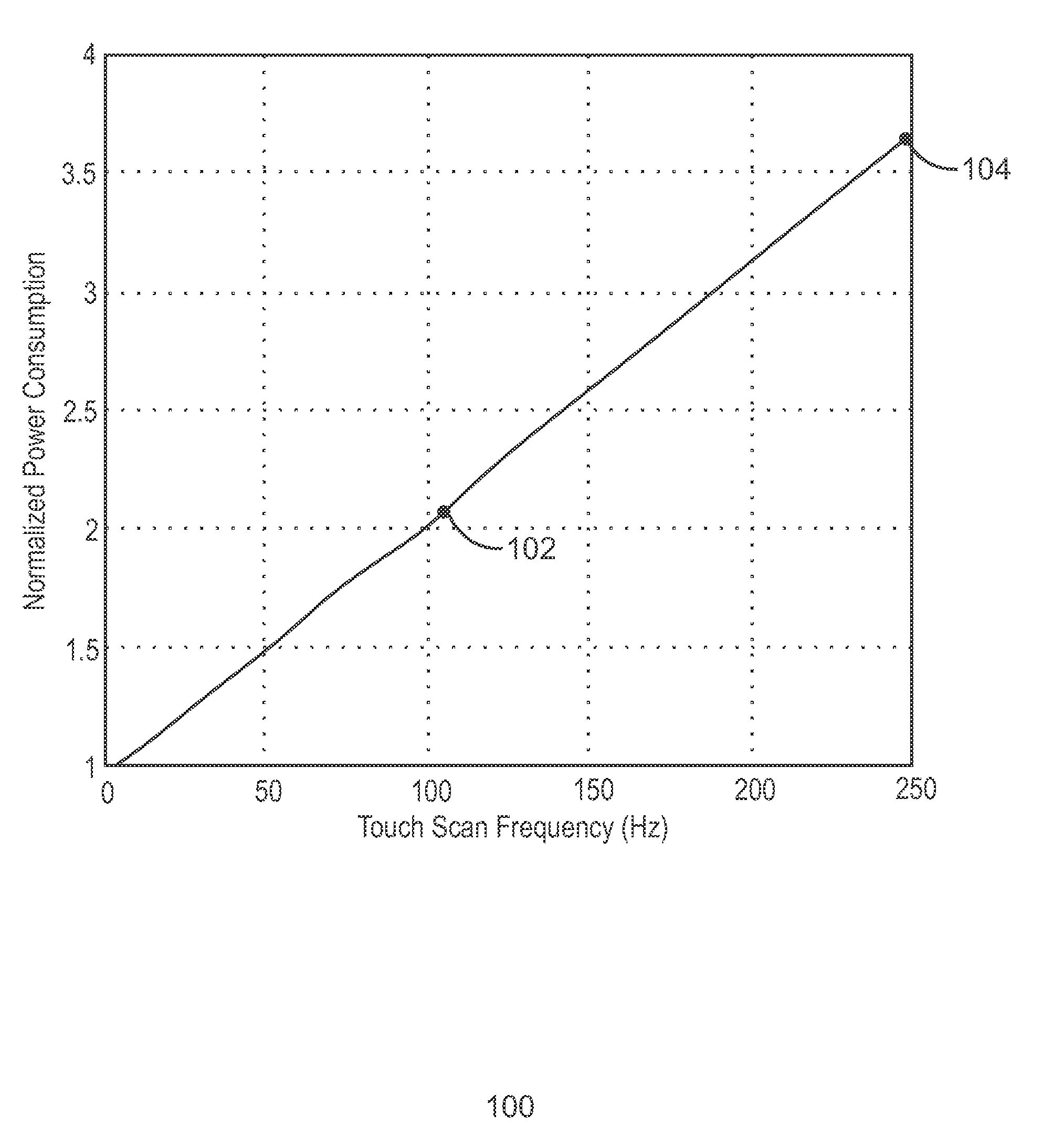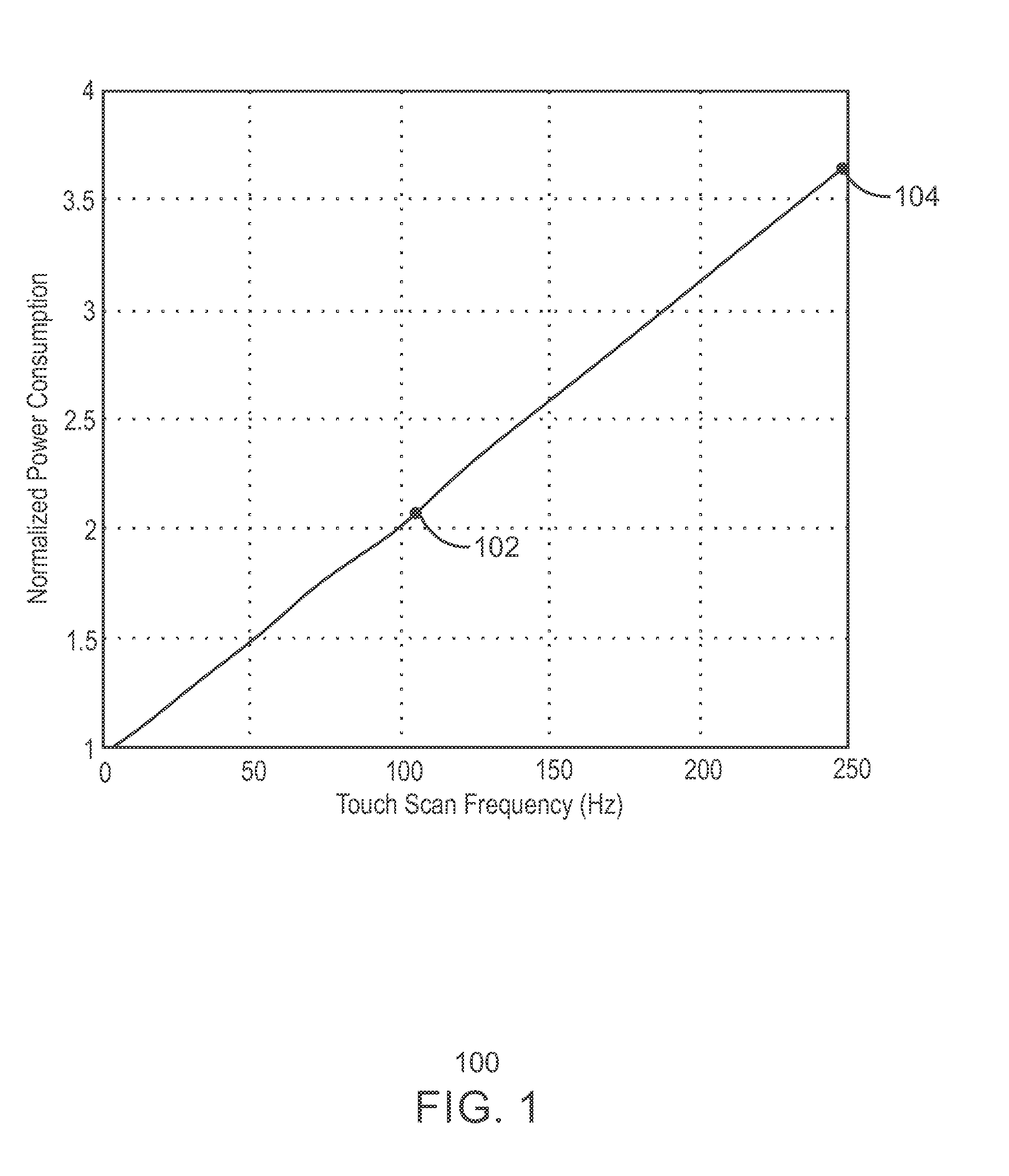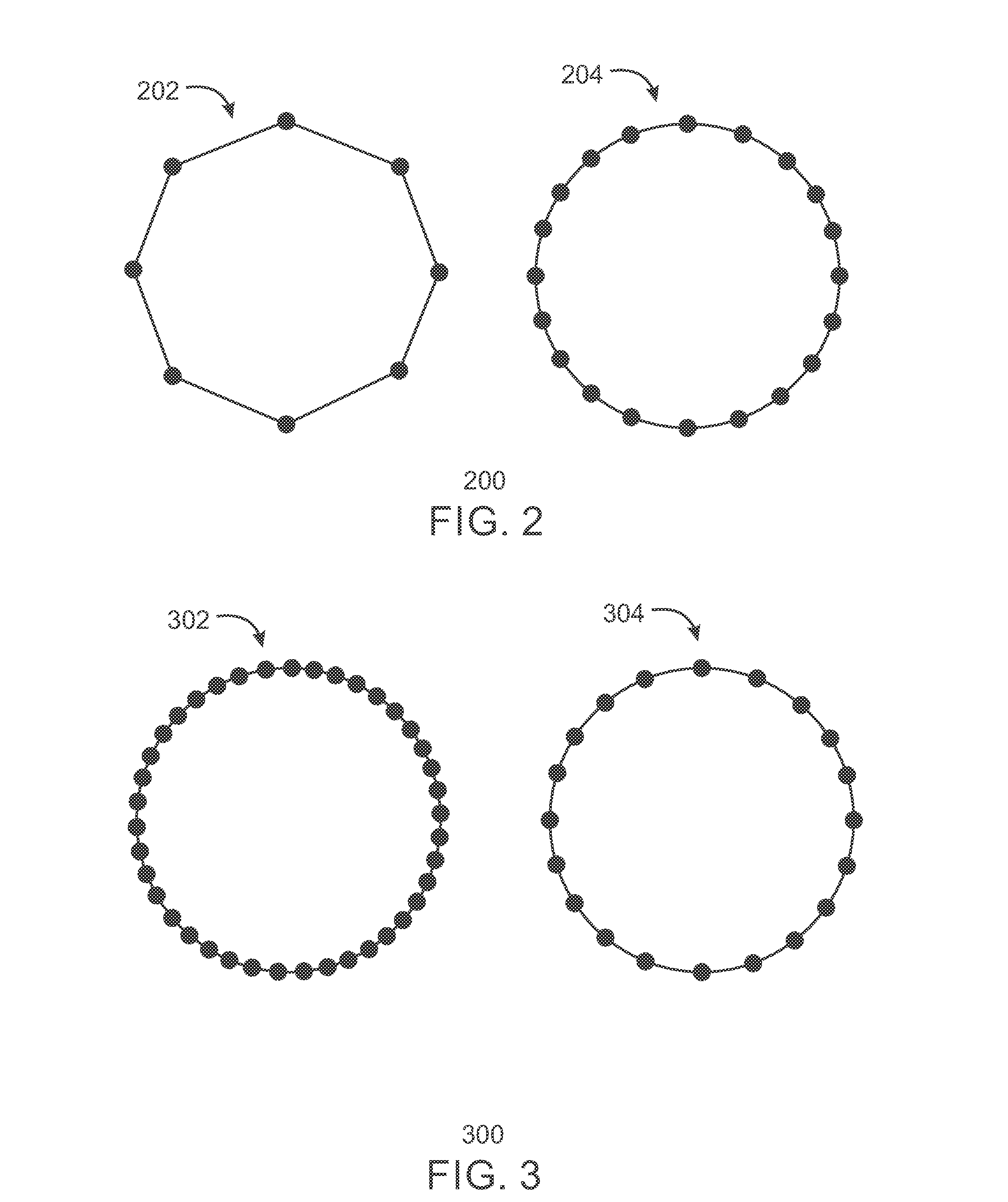Adaptive touch scanning
- Summary
- Abstract
- Description
- Claims
- Application Information
AI Technical Summary
Benefits of technology
Problems solved by technology
Method used
Image
Examples
example 1
[0067]An apparatus for adaptive touch scanning is described herein. The apparatus includes logic to calculate a distance traveled between two consecutive touch samples and logic to compare the distance traveled with a target distance to find an actual error. The apparatus also include logic to update the scan rate based on the actual error. The actual error may be determined using proportional (P) gain, integral (I) gain, and derivative (D) gain coefficients. Additionally, the proportional (P) gain, integral (I) gain, and derivative (D) gain coefficients may be optimized with respect to a touch controller. The scan rate may be adjusted on the fly based on a speed of touch motion. Further, the predefined target distance may be a distance between two consecutive touch inputs. The scan rate may be updated while touch inputs are generated, and an initial scan rate may be 10 milliseconds.
example 2
[0068]A touch controller for adaptive touch scanning is described herein. The touch controller includes a distance estimator, a comparator, and a scan interval updater. The distance estimator may calculate the traveled distance between two consecutive touch samples, and the comparator may calculate an actual error. The scan interval updater may update a touch scan rate of the touch controller. The touch controller may be a proportional, integral, and derivative (PID) controller. Moreover, the PID controller may be optimized using proportional (P) gain, integral (I) gain, and derivative (D) gain coefficients. The scan interval updater may maintain a distance traveled between consecutive touch events within a certain range by adjusting a next scan interval. Additionally, the scan interval may be increased if the traveled distance is less than a low threshold, and the scan interval is decreased if the traveled distance is larger than a high threshold.
example 3
[0069]A system that performs adaptive touch scanning is described herein. The system includes a display, a radio, and a memory that is to store instructions and that is communicatively coupled to the display. The system also includes a processor communicatively coupled to the radio and the memory, wherein when the processor is to execute the instructions, the processor is to calculate a distance traveled between two consecutive touch samples and compare the distance traveled with a target distance to find an actual error. Additionally, when the processor is to execute the instructions, the processor is to update the scan rate based on the actual error. The actual error may be determined using proportional (P) gain, integral (I) gain, and derivative (D) gain coefficients. The proportional (P) gain, integral (I) gain, and derivative (D) gain coefficients may be optimized with respect to a touch controller. The scan rate may be adjusted on the fly based on a speed of touch motion. Addi...
PUM
 Login to View More
Login to View More Abstract
Description
Claims
Application Information
 Login to View More
Login to View More - R&D
- Intellectual Property
- Life Sciences
- Materials
- Tech Scout
- Unparalleled Data Quality
- Higher Quality Content
- 60% Fewer Hallucinations
Browse by: Latest US Patents, China's latest patents, Technical Efficacy Thesaurus, Application Domain, Technology Topic, Popular Technical Reports.
© 2025 PatSnap. All rights reserved.Legal|Privacy policy|Modern Slavery Act Transparency Statement|Sitemap|About US| Contact US: help@patsnap.com



